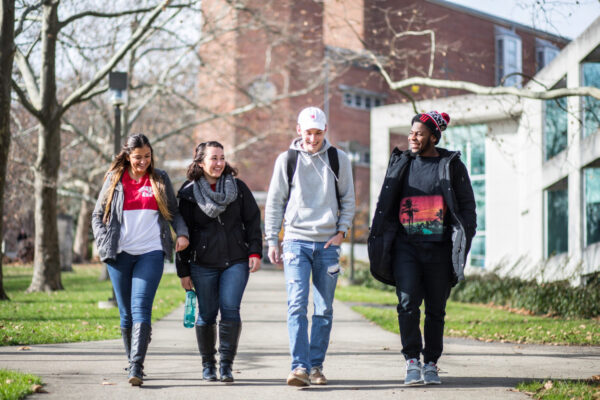Jason Kilmer writes about marijuana use and its impact on academics and mental health, with considerations for administrators whose state may legalize recreational use.
This post is the latest in a series on college student mental health and well-being.
On Nov. 6, 2012, voters in Washington State joined voters in Colorado in passing legislation that legalized use and possession of cannabis for people over 21. Since that time, eight other states (and Washington, DC) have passed similar bills. What does this mean for college campuses?
Any administrator and campus committed to student success, retention, and achievement has to be mindful of the relationship between marijuana use and academic outcomes. Peer-reviewed, published research has compellingly demonstrated that the more students report using marijuana, the more they skip classes, have lower GPAs, have enrollment gaps, and do not graduate on time. Another study published in the journal Drug and Alcohol Dependence found that college students who use marijuana have lower GPAs than those who do not and are more likely to drop out and less likely to graduate on time. Finally, research published last year in PLOS ONE found a significant decline in GPAs over two years when students used both marijuana and alcohol at moderate to high levels.
In short, these studies found that marijuana use by college students is incongruous with student success.
A recent article in the American Journal of Public Health stated that abstinence is the most effective way to avoid these risks, and that those who choose to use must “recognize that they incur risks of a variety of – acute and long-term – adverse health and social outcomes.”
This is also true when it comes to mental health. The same article warns that those with a predisposition for or first-degree family history of psychosis or substance use disorders should refrain from cannabis use. Research has linked cannabis use to schizophrenia, as well as to increased risk of depression and anxiety.
What can campuses do?
Although this is by no means an exhaustive list, consider the following:
Understand what it means to stay compliant with the Drug Free Schools and Campus Regulations of the Drug Free Schools and Communities Act (DFSCA). DFSCA requires campuses to prevent the use and possession of illegal drugs. Because this is a federal mandate, and because cannabis is classified as a Schedule I illicit drug, cannabis use and possession remains illegal on college campuses, regardless of state regulations. Campuses should also understand that any advertising on campus (or in campus newspapers) for dispensaries, retail outlets, or other cannabis-related products is a violation of DFSCA guidelines. The National Center on Safe Supportive Learning Environments’ website offers more information about what DFSCA means for every campus.
Know that marijuana potency has changed in the last several decades. Marijuana in 2018 is a different substance than it was even 10 years ago. THC, the psychoactive ingredient in marijuana most often associated with the high, has increased in potency dramatically. THC potency has increased from 2–3 percent in the 1980s to 4–5 percent in the 1990s to 10 percent by 2010; more recently it has approached 12–13 percent nationally, with rates much higher (including well over 20 percent) in states with legal retail stores.
As potency increases, and as access to various means of using cannabis increase, instances of an acute toxic psychotic reaction become more likely (consisting of hallucinations, delusions, and/or depersonalization).
Be mindful of messages regarding marijuana in campus coverage. For example, a newspaper feature (or spotlight on an alum) that highlights something related to the cannabis industry should also be balanced with features on what the science says about marijuana’s effects, including those most relevant to the health, mental health, and academic outcomes of students.
Consider survey-based screening for cannabis use disorder. Students can get addicted to marijuana. There are clear criteria for a cannabis use disorder (and even cannabis withdrawal), and there are associations between cannabis use disorder, depression, and suicidal behavior that could warrant attention.
If your campus chooses to screen for cannabis use disorder, campus professionals can help identify students who may be struggling, and the process of screening can relay the message about addiction potential (the Cannabis Use Disorders Identification Test – Revised is the most widely used.) It is important to note that many of the reasons students report using marijuana (e.g., helping with depression, anxiety, sleep difficulties, problems with appetite, and headaches) are among the criteria for cannabis withdrawal. Students who report that marijuana use helps with depression because they (a) notice their sense of depression worsens when they stop using and (b) their mood improves when they resume could be managing withdrawal symptoms instead of an underlying mood issue.
Consider ways to correct misperceived norms on campus. Decades of research on alcohol show a clear misperception in the prevalence of those who consume alcohol (i.e., students estimate that more of their classmates drink than actually do) as well as in drinking rates (i.e., students estimate that those who drink consume more than they actually do).
The same patterns hold with marijuana. Students’ perception that “everyone” uses marijuana can be associated with their own actual use and even consequences. Efforts to correct these misperceptions by presenting data on actual trends can reinforce abstinence (i.e., most college students do not use marijuana, and those who abstain are making the choice most have made), or could impact the substance use of those whose use is inflated in part due to their perceptions of what others are doing.
Provide services for those contemplating or hoping to make a change in their substance use. Brief interventions have shown great promise in reducing marijuana use and related consequences. Investment in support services, training, and education for staff on campus, on top of ensuring that we are taking care of students, will pay dividends academically.
Our colleges and universities attract students from geographically diverse settings, which means students enroll from states with different laws surrounding marijuana use. How marijuana is handled on campus can send a clear message about prevention and enforcement and its impact on student success.
Colleges are at the forefront of helping individuals understand the possible impact of marijuana use on health, wellness, and college success. Institutions are also uniquely positioned to incorporate marijuana education into existing health promotion models. Through prevention, education, and support services we can better equip our college students to understand the realities of marijuana use and empower them to make the best health choices for themselves.
The author would like to acknowledge Shannon Bailie’s contribution to this blog post.
If you have any questions or comments about this blog post, please contact us.


